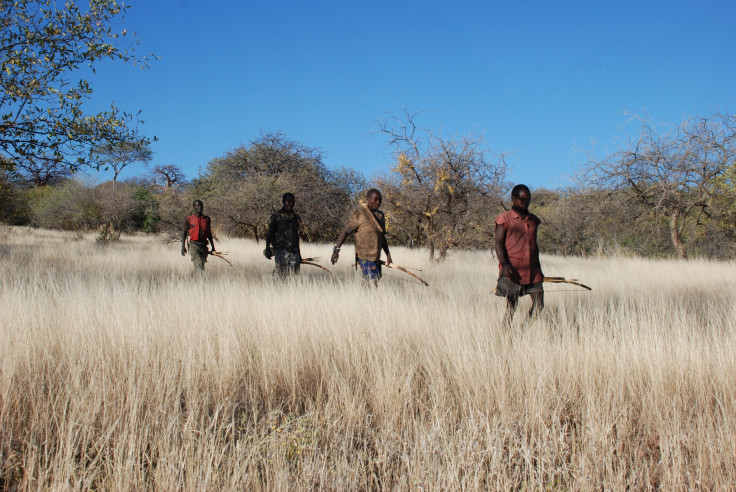Lévy Walk: Sharks, Honeybees And Humans All Hunt The Same Way

A team of researchers have found that the movements of Tanzania’s Hadza tribe while foraging can be described by a mathematical pattern called a “Lévy walk,” which is also found in the movements of other animals such as sharks and honey bees.
According to the new study, published in the Monday issue of the Proceedings of the National Academy of Sciences, the Lévy walk pattern appears to be ubiquitous in animals, and the researchers wanted to know if humans also hunt in a similar way. To do this, the researchers worked with the Hadza people of Tanzania, one of the last big-game hunter-gatherers in Africa, and one of the last groups on Earth to still forage on foot with traditional methods.
“Scientists have been interested in characterizing how animals search for a long time, so we decided to look at whether human hunter-gatherers use similar patterns,” David Raichlen of the University of Arizona, who led the study, said in a statement. “If you want to understand human hunter-gatherer movement, you have to work with a group like the Hadza.”
The members of the Hadza tribe, who participated in the research, wore wristwatches with GPS units that tracked their movement while on hunting or foraging trips. Using the GPS data, the researchers determined that while the Hadza use other movement patterns, the dominant theme of their foraging movements was a Lévy walk -- the same pattern used by many other animals when hunting or foraging.
“Detecting this pattern among the Hadza, as has been found in several other species, tells us that such patterns are likely the result of general foraging strategies that many species adopt, across a wide variety of contexts,” Brian Wood, an anthropologist at Yale University in New Haven, Conn., and the study’s co-author, said in the statement.
The Lévy walk involves a series of short movements in one area and then a longer trek to another area. According to some earlier studies, humans sometimes follow a Lévy walk even while walking around an amusement park.
According to Adam Gordon, the latest study’s co-author and a physical anthropologist at the University at Albany and the State University of New York, the Lévy walk seems to occur in different species, including in humans, and in environments ranging from rural to urban areas. The movement is also likely to be a fundamental pattern present in the evolutionary history of humans, Gordon said.
“We definitely use memories and cues from the environment as we search,” Raichlen said, “but this pattern seems to emerge in the process.”
The researchers said that future studies on the Lévy walk are expected to help better understand the reasons for using such a movement, and whether the pattern is determined by the distribution of resources in the environment.
Describing human movement patterns could also help anthropologists understand how humans transported raw materials in the past and expanded their home ranges.
© Copyright IBTimes 2024. All rights reserved.












